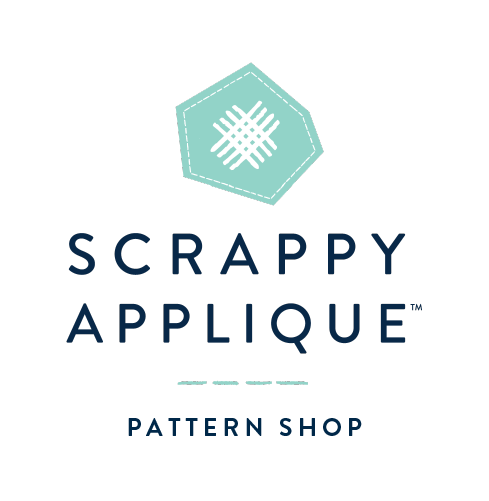"There is NO WAY I will ever want to try out English Paper Piecing-- it seems way too confusing and tedious!"
This what I would have said a few months ago, had you asked me...
But now, I'm a little bit obsessed.
Pieces and photo by Giuseppe Ribaudo
Last month in The Meander Guild, we learned all about English Paper Piecing (EPP). Each month we explore a different quilt-making style from around the world, and members have been asking me to cover paper piecing.
Well, I've never tried EPP before-- it always looked mind-numbingly tedious and really confusing. I didn't understand how all the little pieces fit together, and the thought of sewing them all by hand made me want to run away.
But, my dear quilty friend, Giuseppe Ribaudo (@Giucy_Giuce), whom I adore and respect seemed to LOVE this crazy technique, so I invited him to come teach it to our Meander members.
Boy, was my mind blown by how simple it was! He even shared how you can piece it together on your machine, but after he took us through the traditional hand-piecing method, I was actually excited to give it a shot!
Let's take a look at the history of EPP.

Quilt: India Mosaica by Dominique Husson
Paper Piecing became really popular in England in the second half of the 18th century. It came to be known as English Patchwork or Mosaic Patchwork, but is today frequently referred to as English Paper Piecing. At first, since the traditional manner is quite time consuming, this method was mostly practiced by women of the upper and middle class who had more leisure time but soon spread in popularity to the rest of society.

Antique Quilt, maker unknown
English Paper Piecing (or EPP) is done in 2 parts, first, you make your pieces, whether they are hexagons, diamonds, triangles or any number of other possible shapes, this is done with paper. The edges of the fabric are folded around the paper hexagon, for example, and either tacked down with basting stitches or glue.
Women would often use newspaper for these pieces and a lot of old quilt tops have been dated because of the newspaper still inside the pieces-- little bits of history literally sewn into the quilt top! So neat.

Antique English Patchwork, circa 1870, maker unknown
After you prepare all your pieces, then you sew them together. You then remove the paper and quilt the top however you like.
We had so much fun learning from Giuseppe, he made the process seem SO simple and doable. He even taught us how to easily design our own EPP project!
I had a ball using one of his design methods to put my own scrappy spin on a traditional shape!

If you want to explore different quilt-making styles from around the world, like EPP, I hope you'll join us in Meander-- we have a ball.
If you want to hear more from Giuseppe, you can watch my interview with him, here. It was really inspiring, I think you'll love it.
I'd love to hear from you! Have you tried EPP before? What did you think? If you haven't tried it, do you share some of the same concerns I had? Leave a comment below!


6 comments
I have an old quilt that has been started this way along with the cut out paper and fabric hexagons that my mom picked up over 25 years ago. This one is all hand basted and sewn by hand. I tried it and it is fun, I will pull out and work on again since I read more info on this. Thanks!!!!
Oh Shannon I am so behind at my looking at your site and all the creative opportunities available.
I am in “Love” with this technique. I want t sign up for the classes but can’t seem to find them on the website.
I registered for the talk today Feb. 8 but missed it due to unforeseen circumstances. Is a recording available?
I love EPP! I have made pieced hexi’s with the book by Mickey Dupre. Even appliquée them onto pieced blocks. Now have to add slashing and borders and the top is finished. All the fabric for this project was/is from my stash; I will also piece a backing from my stash! This was an early Covid project to keep my hands busy.